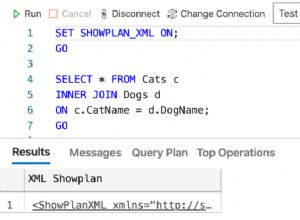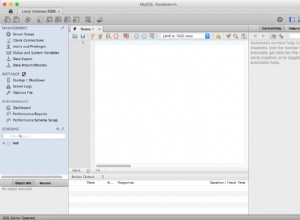Si vous êtes sur SQL Server 2012, vous pouvez utiliser LAG pour comparer la valeur avec la ligne précédente et vous pouvez utiliser SUM et TERMINÉ pour enregistrer les modifications.
with C1 as
(
select custno,
moddate,
who,
lag(who) over(order by moddate) as lag_who
from chr
),
C2 as
(
select custno,
moddate,
who,
sum(case when who = lag_who then 0 else 1 end)
over(order by moddate rows unbounded preceding) as change
from C1
)
select row_number() over(partition by change order by moddate) as RowID,
custno,
moddate,
who
from C2
Mise à jour :
Une version pour SQL Server 2005. Il utilise un CTE récursif et une table temporaire pour le stockage intermédiaire des données sur lesquelles vous devez itérer.
create table #tmp
(
id int primary key,
custno int not null,
moddate datetime not null,
who varchar(10) not null
);
insert into #tmp(id, custno, moddate, who)
select row_number() over(order by moddate),
custno,
moddate,
who
from chr;
with C as
(
select 1 as rowid,
T.id,
T.custno,
T.moddate,
T.who,
cast(null as varchar(10)) as lag_who
from #tmp as T
where T.id = 1
union all
select case when T.who = C.who then C.rowid + 1 else 1 end,
T.id,
T.custno,
T.moddate,
T.who,
C.who
from #tmp as T
inner join C
on T.id = C.id + 1
)
select rowid,
custno,
moddate,
who
from C
option (maxrecursion 0);
drop table #tmp;




